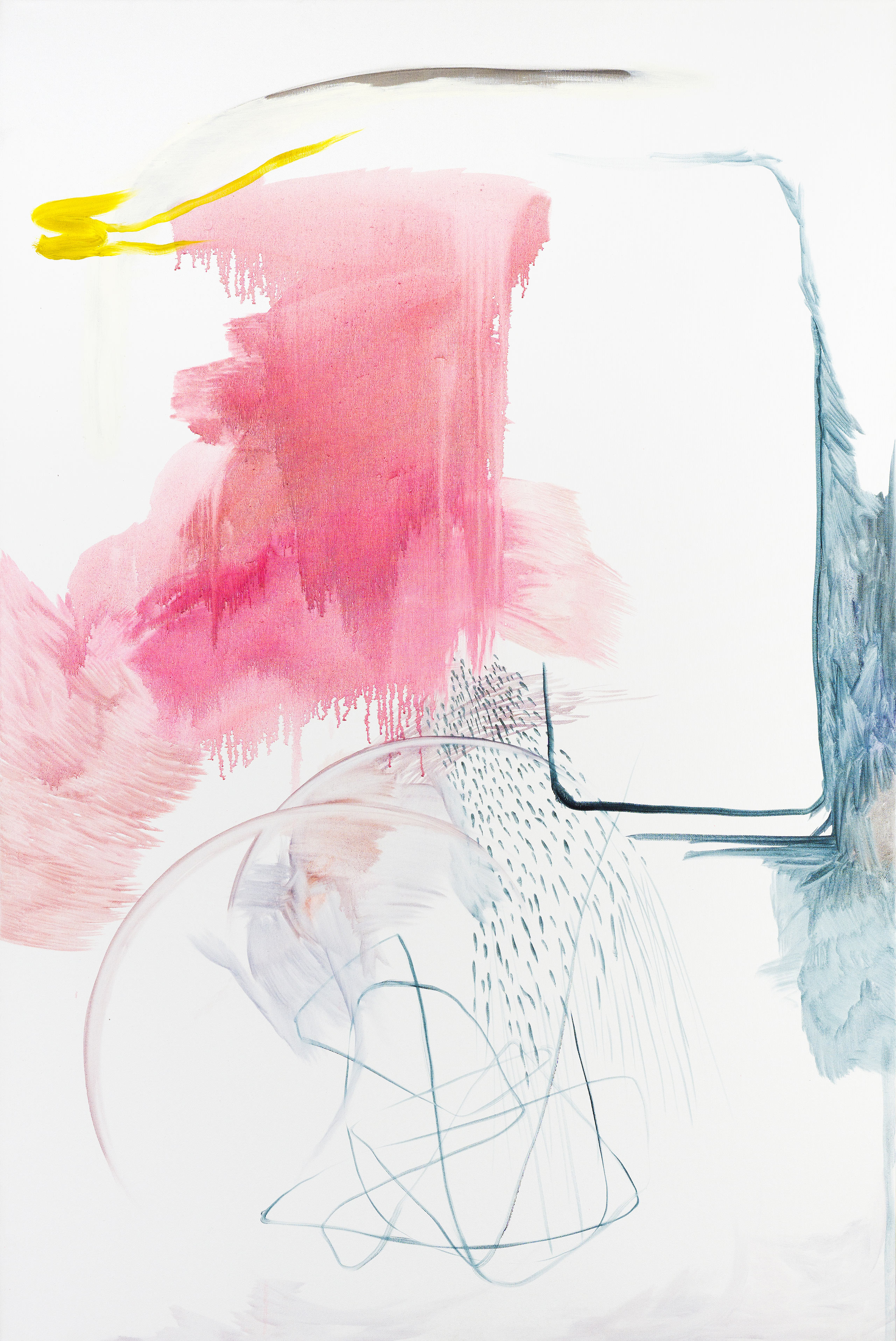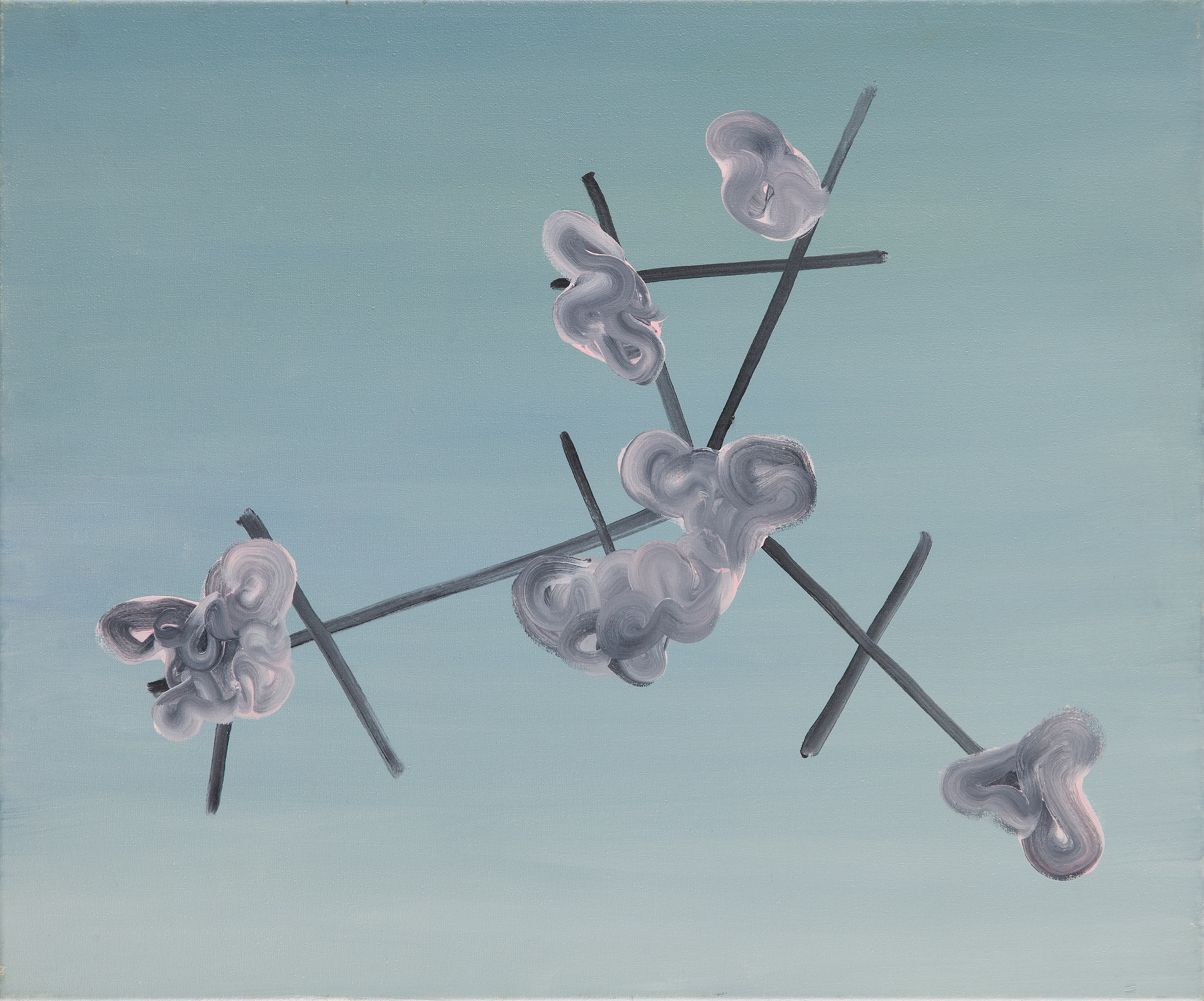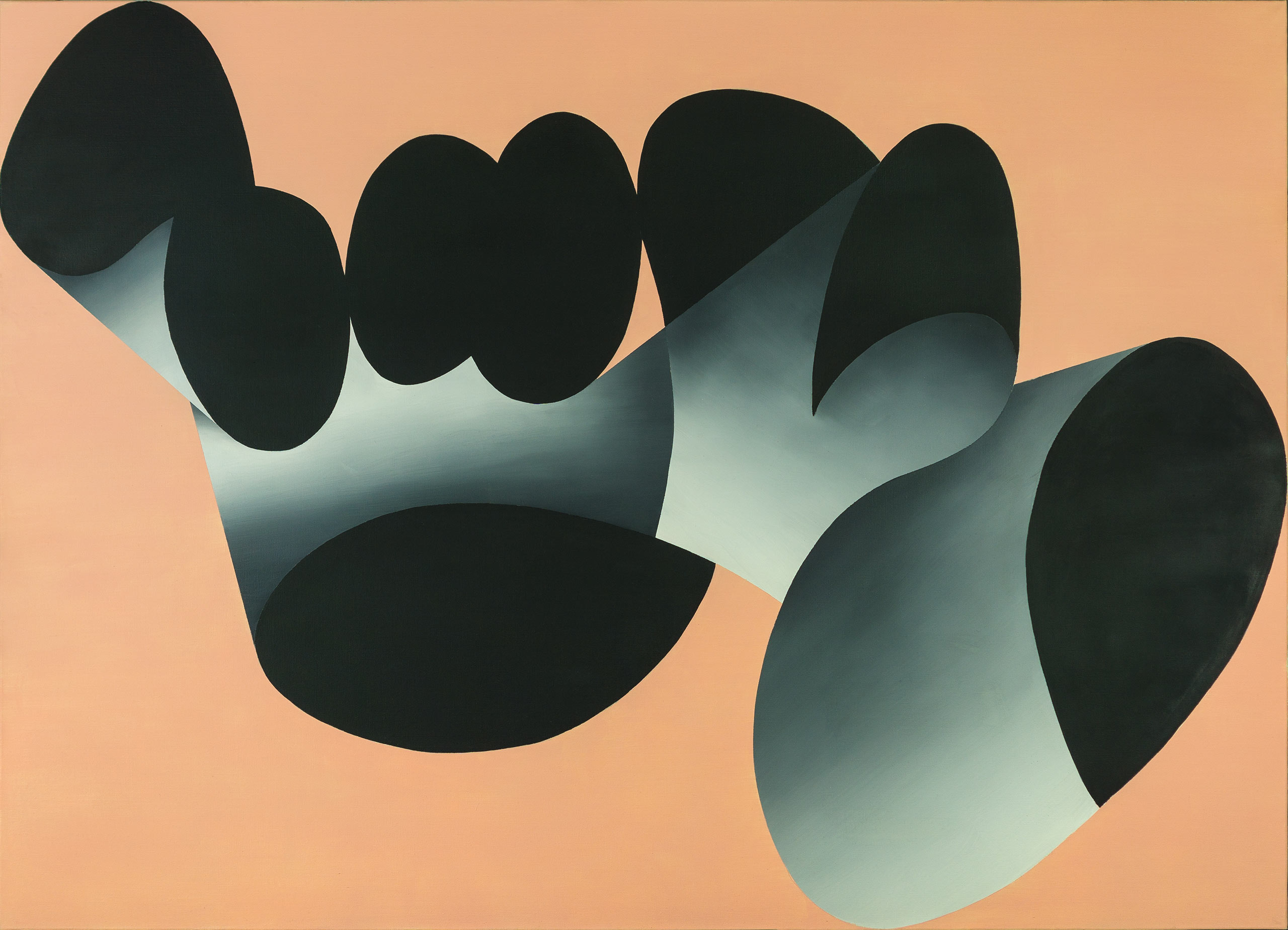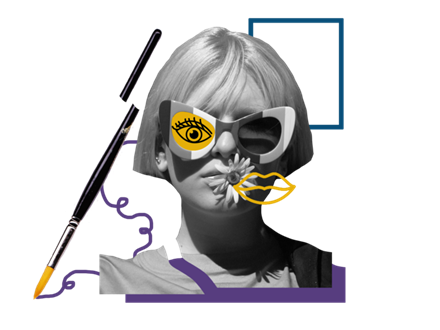
EUROPEJSKI NEWS is an exclusive space for cultural and artistic news, Warsaw city guides, and insights into the history of the capital and the legendary Hotel Europejski. Join us for a journey through the streets of Warsaw.
- Artists of the Hotel Europejski Art Collection in the urban space of Warsaw
- The “ŁAD” Artists Cooperative: The Legend of Polish Design
- Unknown painting by Józef Chełmoński found after 133 years
- The Former Royal Residences: Masterpieces of Warsaw Architecture
- Enrico Marconi: an outstanding architect of 19th - century Warsaw
- Zachęta National Gallery of Art: Warsaw`s contemporary art icon
- The 50th Anniversary of the Reconstruction of the Royal Castle in Warsaw
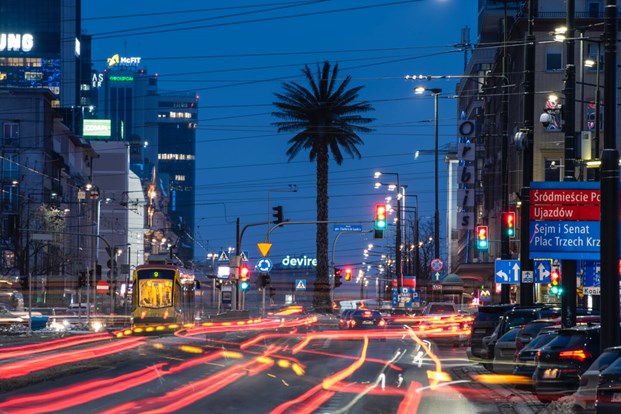
Artists of the Hotel Europejski Art Collection in the urban space of Warsaw
Spring weather is conducive to exploring the city, and we encourage you to discover art in the urban spaces of Warsaw, created by artists from the collection of the Hotel Europejski. Public art has an extraordinary impact as it comments on reality, stimulates the imagination and is able to redefine the identity of its surroundings. By going beyond the walls of the gallery, it also reaches those who are not even interested in art. In contrast to the art presented in museums and galleries, it often encourages interaction. We invite you to read our guide to Warsaw in the footsteps of the best Polish contemporary art.
Joanna Rajkowska
Over the last two decades, art installations have been increasingly appearing in Warsaw public areas. The most famous one is definitely Joanna Rajkowska's palm tree at Rondo de Gaulle. The Greetings from Jerusalem Avenue installation commemorates the former Jewish inhabitants of Warsaw. Rajkowska wanted to remind us where the name of one of the most important arteries in Warsaw comes from: in the second half of the 18th century, the Jewish settlement of New Jerusalem was established near today's Zawiszy Square. The idea for the form of the installation came from the artist's trip to Jerusalem, where palm trees are a natural element of the urban landscape. For over 20 years of its existence, Rajkowska's palm tree has also grown into the Warsaw landscape. Although it initially aroused great controversy and opposition, today it is difficult to imagine this place without it. The hotel`s collection includes three photographs of the famous palm tree, taken by the artist. They show this contemporary symbol of Warsaw in a very curved and unrealistic way.
Rajkowska is also the author of The Hatchling installation, which was erected at Pięciu Rogów (Five Points) Square in 2023. It is a sound sculpture in the form of a two-meter-high replica of a Song Thrush egg. By touching its surface, we can feel vibrations, and by putting our ear to it, we can hear the sounds of a hatching chick, such as a heartbeat or a beak tapping on the shell. This installation aims to raise awareness of nature, but it also has a historical dimension, just like the palm tree. This is the place where in the 18th century there was the so-called Szczwalnia, a wooden amphitheater dedicated to animal fights. The artist wanted to commemorate the victims of this cruel entertainment, which shocked even King Stanisław August himself. After his first visit, he never returned.
Monika Sosnowska
The context of location is also used by Monika Sosnowska, whose installation Grating is located in the Bródno Sculpture Park. It is a four-meter-high, flattened ball made of ornamentally formed reinforced bars or ‘rebar’. The inspiration for these designs were anti-burglary bars that the inhabitants of Bródno installed in the windows of their apartments on ground floors, and sometimes also in kiosks and shops. Sometimes such bars appeared even on the upper floors for fear that possible thieves could climb up the bars on the lower floors. The work also reflects Sosnowska's interest in architecture and materials used during the Polish People's Republic. Even though there is a sign next to the installation prohibiting touching it, children naturally treat it as a playground and try to climb on it.
The Flag stand installation on the wall of the Hotel Europejski`s lobby, oscillates in similar forms. It is a deformed flag stand from the time of the Polish People's Republic, made, among others, from rebar. Due to the shortage of materials, such rods were also used to produce the above-mentioned bars, flower stands and flag stands. Sosnowska also used the context of Piłsudski Square, the place where the Polish flag is presented.
Maurycy Gomulicki
The art of Maurycy Gomulicki has a completely different character. The artist is known for works affirming life, fun, pleasure and unlimited imagination. The Slither installation is located on the Vistula boulevards near the Gdański Bridge. It is a large concrete sculpture of an eel that keeps digging into the ground and then comes to the surface. For the artist, it is our local Loch Ness monster. However, there is something friendly, encouraging interaction about it, just as Gomulicki intended. The shape of the eel allows you to slide under it and even climb on its back.
Gomulicki's older and more known installation is Światłotrysk in Kępa Potocka in the Żoliborz District. It takes the form of a large glass filled with pink neon lights which, when lit in a specific sequence, imitate bubbles escaping from a carbonated drink. The pink glow of neon lights makes this space more friendly at night, with the neon lights inviting you to sit on a bench nearby the pond. This work is also an affirmation of joy and pleasure, which is what is most valuable to Gomulicki.
The artist`s work in the form of a mural decorates the wall of one of the largest suites of the Hotel Europejski. This is the artist's characteristic geometric interpretation of the Warsaw Mermaid. Gomulicki was inspired by the decoration of a ceramic plate made in 1968 by a Polish artist, Jan Ciaś.
Wilhelm Sasnal
The most famous example of public art is definitely the mural, and the number of them in Warsaw is constantly increasing. One of the most interesting is the image of Jacek Kuroń on the wall of the high school at Złota 58. The artist, Wilhelm Sasnal, created the work in his characteristic style and, which is common for him, inspired by real photographs. One of the images shows the politician during his arrest in July 1965, the other is inspired by a photograph by Tadeusz Zagoździński. The mural commemorates one of the most important oppositionists and activists of Solidarity, but also the co-creator of democratic Poland after 1989.
Wilhelm Sasnal's painting is the largest artwork of this type located in the lobby of the Raffles Europejski Warsaw. For most people viewing it for the first time, its subject is very enigmatic and is associated rather with abstract painting. After a while, however, the open trunk of a Volvo XC60, once Sasnal's private car, emerges from the darkness. The artist is famous for painting his immediate surroundings. The mystery in this piece is what's inside the trunk? There are as many theories as there are viewers.
Twożywo
Staying on the topic of murals, it is impossible not to mention the Twożywo group, which introduced a completely new quality to street art in Poland. The group operated between 1998–2011 and was created by Krzysztof Sidorek and Mariusz Libel. Twożywo's works were inspired by pop art and poetry, combining images with words in an unprecedented way, commenting on important social phenomena. One of Twożywo's most known murals, Human Fate (Człowieczy Los), is located on the wall of a tenement house at 150 Radzymińska Street. It shows two people holding hands like a parent and a child. The parent has the head of a wolf, and the child has the head of a sheep. The inscription of the title is painted in two colors, where several middle letters in red create a Polish word for sheep. It encourages reflection on the human condition. Does it mean we are born as sheep and become wolves? Or is it about others manipulating us pretending to have good intentions? The presented image can be understood in many ways.
Another, but no longer existing work of Twożywo was the mural Still aware (Jeszcze świadomy) on the wall of a pre-war tenement house at 50 Wolska Street. A crane ball with the inscription "Inertia (Bezwład)" is aimed at the title inscription, suggesting that it will be destroyed. At that time, the tenement house had already been abandoned and slated for demolition. The work addressed the issue of protecting the heritage of previous generations from the power of money in the modern world. In 2013, the tenement house was finally demolished, the mural was gone, and a new skyscraper stands on the site today.
The Hotel Europejski collection includes two artworks by Twożywo, containing images on aluminum sheets once being real outdoor murals: An Individual (Jednostka) and A Guise Watch (Pozór, dozór). The second one contains two words: appearance and supervision. When we look carefully, the letters create two images: a policeman using a whistle, and a police boot. It may suggest a false appearance of safety that the police are supposed to provide to citizens. However again, it can be interpreted more broadly.
Hanna Rechowicz
A unique work among the works discussed here is the mosaic of Hanna Rechowicz decorating the façade of her own house on Lekarska Street. Although it does not function in a common, urban space, anyone passing by can admire it.
In the years of the Polish People's Republic, Hanna Rechowicz and her husband Gabriel Rechowicz created decorations using mosaics and wall painting for public buildings in Poland and abroad. Most of these works no longer exist, as many buildings from this period have been demolished. This is what happened with the famous Supersam shop or Legia swimming pools, where the Rechowiczs’ outstanding projects were located. Fragments can still be seen in the courtyard of the Dom Chłopa at Powstańców Warszawy Square, and on the facade of the school at 31 Felińskiego Street.
The mosaic on the façade of the artists' own house has a unique history. The house was built before World War II. Hanna Rechowicz decorated it with stones brought from the Vistula, filling in the bullet holes from the Warsaw Uprising of 1944. The result was a work of a fairy-tale character, typical of the artist. The use of natural materials was characteristic of the Rechowicz family's work.
It is no different in Hanna Rechowicz's work inside the hotel's largest Europejski Royal Suite. It is an extremely colorful painting made in a mixed technique on pine plywood with veneers. The slightly surreal scene shows birds, flowers, leaves, ears of corn and trees against a blue sky. The work was created in 1988, but it did not find its way into the interior planned for it and remained in the artist's studio for 30 years. Today it is a beautiful, colorful accent to the white and gray of the hotel`s palatial interior.
We hope that our mini guide will encourage you to discover the different corners of the city, full not only of interesting architecture and history, but also the art of some of the most outstanding Polish artists. We also invite you to visit the unique collection of the Hotel Europejski, one of the largest, private collections of Polish contemporary art open to the public.
Photographs: Marek Szczepański, Wojtek Radwański, Bartosz Stawiarski, Maurycy Gomulicki, Partykula.pl, Małgorzata Zadrożna-Karpiejczyk
Author: Łukasz Godlewski, Art Collection Manager, Raffles Europejski Warsaw
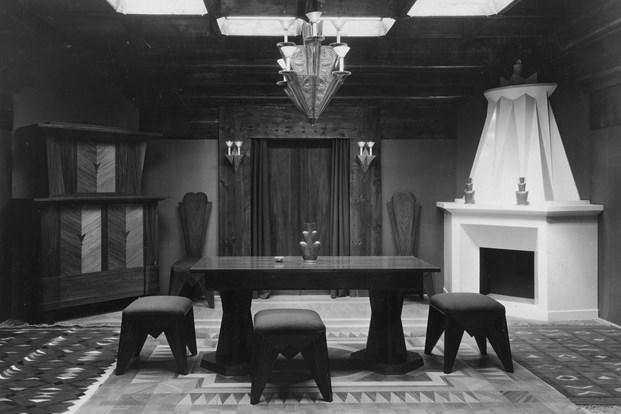
The “ŁAD” Artists Cooperative: The Legend of Polish Design
For over 160 years, art and design have shaped the identity of the Hotel Europejski. It was not only the address of choice by celebrities from the world of culture, but also the premiere location of renowned boutiques and showrooms. The salon of the ŁAD Artists’ Cooperative was one of the most famous. It created numerous projects of applied art, which today belong to the canon of Polish design for the 20th century.
In 1926, the “ŁAD” Artists Cooperative was established in Warsaw. Its aim was to promote Polish design, as was appreciated a year before at the International Exhibition of Decorative Arts and Modern Industry in Paris. Polish artists won over two hundred awards, including thirty-five Grand Prix and seventy gold medals. This is when the Polish variety of art deco, inspired by folk art and architecture, was born. It was a result of Poland’s recently regained independence and the desire to manifest its own culture.
ŁAD was founded by professors and students of the Warsaw School of Fine Arts, including winners of the most important awards at the Paris exhibition, such as Józef Czajkowski, Wojciech Jastrzębowski, Helena Bukowska, Jan Kurzątkowski, Julia Kotarbińska and Karol Stryjeński.
The creative manifesto of the cooperative was contained in its very name: “ŁAD” because it’s only three letters, it means that it has to be pretty (ładnie translated) and there has to be neatness in it (ład means neatness)”. Furniture and objects should have been simple, elegant and functional. In addition to furniture, fabrics and objects made of wood, metal, glass and clay were also designed. Raw materials were the most important, and the creative process was supposed to enhance its beauty.
The salon at the Hotel Europejski was opened in 1931. It contained two floors with the downstairs offering products such as furniture, fabrics, tapestries, kilims, ceramics and other utilitarian items, and located upstairs was the exhibition hall. The interior was designed by Wojciech Jastrzębowski, the professor and rector of the School of Fine Arts in Warsaw. At the Paris exhibition, he received the Grand Prix for his furniture. In 1934, he chaired the committee that decided on the interior design of the famous transatlantic ships, Piłsudski and Batory.
Designers were on duty in the afternoon, offering advice and even taking orders for the design of entire interiors. The products were made in workshops on 14 Górczewska Street, where there was a carpentry, weaving and dye workshop. Sales in installments were also carried out, because the prices were considered high. Production was carried out on a small scale, and the designers kept traditional techniques and the highest quality materials. ŁAD products were affordable for more wealthy clients, and owning them testified to the knowledge of the latest trends.
After World War II, the store did not return to the Hotel Europejski. However, the cooperative resumed its activity, exerting a huge influence on the aesthetics of Polish housing. Production took place on a much larger scale than before the war, and the designs had to be adapted to the new realities. Multifunctional furniture designed for small spaces began to be created. Orders were also placed by public institutions such as the Ministry of Culture and Art, Office of the Council of Ministers, Palace of Culture and Science and National Philharmonic. Among the most important designers of this period, it is worth mentioning Władysław Wincze, Olgierd Szlekys, Irena Żmudzińska, Teresa Kruszewska, Ewa Milewska, Hanna Lachert and Andrzej Nehring.
After the fall of communism, the ŁAD Cooperative operated for a few more years, but it did not survive the transformation period and was dissolved in 1996. For 70 years, it was creating Polish decorative culture and shaping Polish tastes. Its uniqueness lay in the fact it was not only a company, but also an artistic group. Many projects of the cooperative can be seen today at the permanent exhibition at the National Museum in Warsaw in the Polish Design Gallery.
Photo gallery:
- Międzynarodowa Wystawa Sztuki Dekoracyjnej i Przemysłu Współczesnego w Paryżu. Ekspozycja w pawilonie polskim, 1925. Narodowe Archiwum Cyfrowe.
- Meble proj. Wojciecha Jastrzębowskiego dla Ambasady Polskiej w Sofii, 1928.
- Wystawa Sztuka Wnętrza i Sztuka Hafciarska w Instytucie Propagandy Sztuki w Warszawie w 1936. Narodowe Archiwum Cyfrowe.
- Zestaw mebli mieszkaniowych proj. Teresy Kruszewskiej, 1957.
Author: Łukasz Godlewski, Art Collection Manager, Raffles Europejski Warsaw
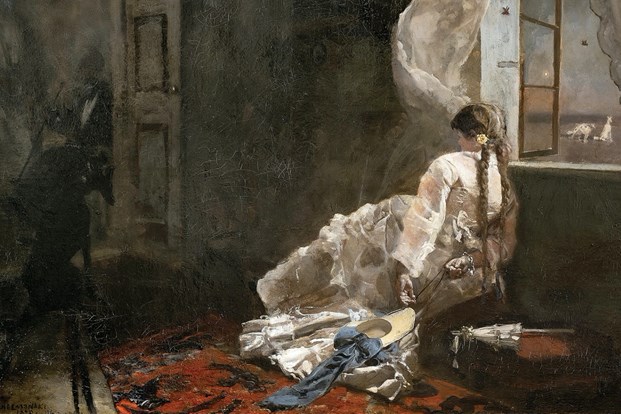
Unknown painting by Józef Chełmoński found after 133 years
An extraordinary discovery for the art world, for the first time in 133 years, an unknown painting by Józef Chełmoński is presented to the public. The “Summer Evening” is one of several works painted by Chełmoński in the famous attic studio of the Hotel Europejski.
Józef Chełmoński is considered the most outstanding representative of Polish realism. In the years 1874-1875, the artist rented a studio in the attic of the Hotel Europejski, which he shared with artists such as Stanisław Witkiewicz (father of Witkacy), Adam Chmielowski and Antoni Piotrowski. They knew each other from the time during their studies at the Academy of Fine Arts in Munich, from where they were returning to Warsaw. Painters created a kind of artistic commune here, and the Hotel Europejski was considered the forge of Polish realism. Chełmoński created several of his works here, e.g. Indian Summer, one of the most famous Polish paintings of the second half of the 19th century.
This is how Antoni Piotrowski recalled this place:
“We found the only studio in Warsaw at that time in the Hotel Europejski, but a tailor lived there. Well, we gave him 150 roubles with our joint financial resources so he could move out. Since the workshop was shamefully dirty, we had it renovated (…). We furnished the studio in such a way that a pine bed, stained mahogany, was placed in the corner, a cabinet with books, also made of pine, in one corner, and an armchair, woven from willow rods, in the middle. It was my furniture. In the wardrobe there was a selection of masterpieces of Polish literature (…) Kraszewski, Krasicki, Bohdan Zalewski, Mickiewicz, Słowacki and Kochanowski.”
The "Summer Evening" painting is unusual for Chełmoński`s work, who usually depicted realistic genre scenes of the Polish and Ukrainian countryside. Here we see a mysterious scene taking place inside a landowner's manor. A girl is sitting by the window, leaning against the sill, illuminated by the moonlight, looking into the dark room. There, in the darkness, we see the mysterious figures of two men and a sinister black dog.
Until June 15, the Summer Evening can be seen live as part of the "Old Masters. 19th Century and Modern Art” exhibition at DESA Unicum on Piękna 1a Street. It`s an art event that no art enthusiast should miss.
Illustrations:
- Summer Evening, Józef Chełmoński, DESA Unicum
- Hotel Europejski before World War I, public domain
- Józef Chełmoński, public domain
Author: Łukasz Godlewski, Art Collection Manager, Raffles Europejski Warsaw
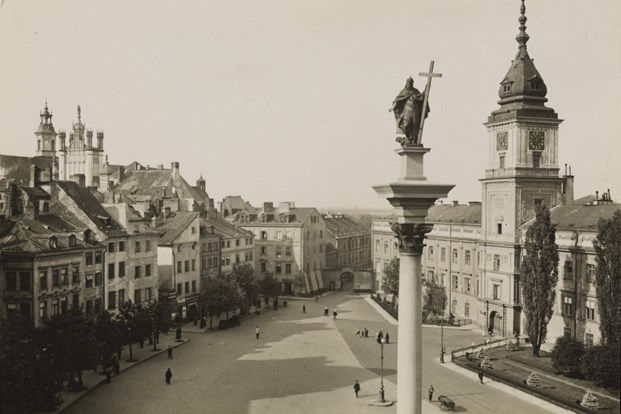
The Former Royal Residences: Masterpieces of Warsaw Architecture
After the childless death of the last Mazovian Dukes, Mazovia was incorporated into the Kingdom of Poland, and Warsaw thus became one of the royal cities. After Sigismund III Vasa and his court moved from Krakow, Warsaw became the political center of the country, and successive rulers built their private residences here. All of them were erected along the oldest and most representative artery of the city, known as the Royal Route.
The Royal Castle was the main seat of Polish monarchs between the 16th and 18th centuries. At that time, it was also the seat of Polish Parliament, and after Poland regained independence in 1918 - the seat of the President of the Republic of Poland. Many important events in the history of Poland took place here, including the adoption of the Constitution of May 3. The reconstruction of the Castle after World War II was unprecedented. The interiors were restored to their 18th-century style, and thousands of artworks and fragments of décor that were rescued from the Castle before it was blown up by the German army, were returned to their place. The Castle has the status of a "Historic Monument" and is located in the area inscribed on the UNESCO World Heritage List as the "Historic Center of Warsaw".
The Kazimierzowski Palace is currently one of the many buildings on the premises of the Main Campus of the University of Warsaw. However it was built much earlier, in the 17th century, as the summer residence of Jan II Kazimierz Vasa. In its history, it has been damaged many times as a result of hostilities, but also accidental fires. After World War II, its front façade was rebuilt in accordance with its state during the nineteenth century, in classicist forms. The side and rear facades are baroque, recreated on the basis of a painting by Canaletto. Today it houses the Rector's Office of the University of Warsaw.
Ujazdowski Castle was built upon the initiative of Sigismund III Vasa on the former site of the wooden court of Queen Bona and then Queen Anna Jagiellonian. The castle and its surroundings underwent numerous transformations, and their influence on the urban layout of today's Warsaw seems to be the most interesting. During the reign of Stanisław August Poniatowski, the Castle became part of the Stanisławowski Axis. It was supposed to connect Warsaw with Jazdów by a system of star-shaped squares similar to Paris. The remains of this foundation are today's squares: Na Rozdrożu, Unii Lubelskiej, Zbawiciela and Politechniki. After the destruction of World War II, the Castle was rebuilt in original forms only from the outside. The interiors were adapted to exhibition activities and the Center for Contemporary Art has operated here since 1985.
The Palace on the Isle in Łazienki Royal Park is undoubtedly one of the most important examples of Warsaw architecture. It was the summer residence of Stanisław August Poniatowski. The king hired outstanding architects: Domenico Merlini and Jan Christian Kamsetzer, who erected a number of beautiful buildings in the park. The palace itself is considered the most important example of the so-called Stanisławowski style, which combined the features of both baroque and classicism. Despite the fire during World War II and the collapse of the upper floor, the architectural design of the ground floor is largely original, and the Ballroom is one of the most beautiful interiors of the Classicism era in Poland.
The Palace in Wilanów is a true pearl of the Baroque and one of the most valuable Polish monuments. Notably, it luckily survived World War II almost intact. It was built in the 1600s for Jan III Sobieski as his private residence outside the city. His marriage with Marie Casimire d'Arquien was an unparalleled example of a marriage of love among European monarchs. This is evidenced not only by the surviving love letters, but also by the symmetrical layout of the palace: half for the king, half for the queen - a solution unheard of in Europe at that time. The interiors are filled with wonderful works of art and furniture, partly from Sobieski's times, and partly acquired by its successive owners, the Sieniawski, Lubomirski and Potocki families.
Our list is closed by the Saxon Palace, which is the only non-standing palace after the war's destruction of the royal residence in Warsaw. Before the war it could be seen from the windows of the Hotel Europejski for many decades. The palace was built for Augustus II the Strong and was part of the Saxon Axis. It was a grand, private part of the city stretching for miles and was inaccessible to ordinary residents. After World War II, the palace was not rebuilt, and only three arcades with the Tomb of the Unknown Soldier remained. In August 2022, the process of the reconstruction of the Saxon Palace began. In several years from now, the Saxon Palace may be seen from the Hotel Europejski`s windows again.
Ilustrations:
- Royal Castle, Henryk Poddębski, before 1939
- Kazimierzowski Palace, Jan F. Piwarski, 1824
- Ujazdowski Castle, unknown author, 1919
- Palace on the Isle, Fajans Maksymilian, 1881
- Wilanów Palace as seen from the garden, Bernardo Bellotto, 1776
- Saxon Palace, Konrad Brandel, around 1895
Author: Łukasz Godlewski, Hotel & Tour Guide, Raffles Europejski Warsaw
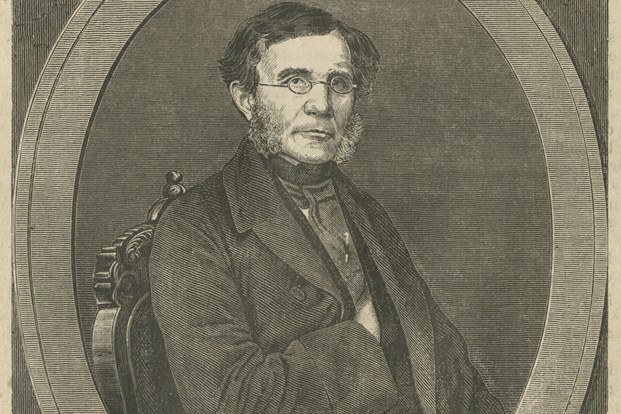
Enrico Marconi: an outstanding architect of 19th - century Warsaw
The spectacular architecture of the Hotel Europejski delights with its references to the Italian Renaissance. The designer of this extraordinary building was Enrico Marconi who was inspired by the 16th-century palaces of Rome and Venice. In January, we celebrate the 231st anniversary of Marconi`s birth, and in Warsaw you can find his most outstanding works.
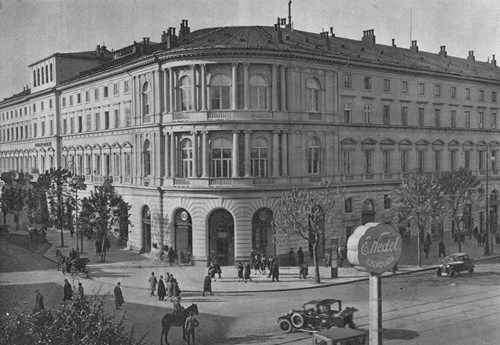
Hotel Europejski in Warsaw, before 1939
Enrico Marconi was born on January 7, 1792 in Rome. He was the son of a builder, fresco painter and head of the Department of Ornamentation at the Academy of Fine Arts in Bologna. He came to Poland in 1822 at the invitation of General Ludwik Michał Pac who entrusted him with the completion of his palace in Dowspuda. Marconi's talent brought him great recognition and five years later he took the position of the city's main architect in Warsaw. He participated in most public projects, and also trained future architects sharing with them his outstanding knowledge and experience. In the years 1851–1858 he was a professor of architecture at the School of Fine Arts in Warsaw where he was the first to introduce architecture studies, raising its status to a separate field of art.
When the Hotel Europejski was built, the nineteenth-century press wrote: "the building is exemplary both in terms of aesthetics, and in terms of the special device inside it and its bold structure, in which the latest discoveries and improvements were applied". Among the many other buildings by Marconi it is worth mentioning the Land Credit Society at Kredytowa Street, which now houses the Ethnographic Museum. The façade of this magnificent building resembles of the Procuratie Nuove in Venice. The architect was also the author of several Neo-Renaissance churches in Warsaw: St. Charles Borromeo`s on Chłodna Street, St Anne`s in Wilanów and All Saints Church on Grzybowski Square. The latter was modeled on the church of St Justina of Padua.
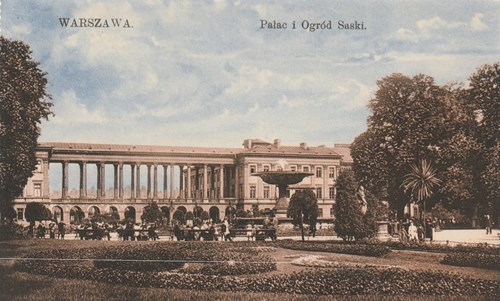
The Marconi`s Fountain in the Saxon Garden, before 1939
There's hardly a resident of Warsaw who doesn't know the fountain in the Saxon Garden. It`s an element of the first modern water supply system in Warsaw designed also by Marconi (hence the name Marconi's Fountain). This system also includes a water tower on the hill near the fountain inspired by the Temple of Vesta in Tivoli. We can safely admit Marconi created a substitute for his Italian homeland in Warsaw. Unfortunately, not all of his works are in such good condition. The façade of the Hotel Europejski, which largely survived war damage, is the best-kept of all the aforementioned buildings. Hopefully, the rest of them will soon regain their former glory.
Photo gallery:
- Hotel Europejski in Warsaw, before 1939
- Enrico Marconi by Józef Polkowski, 1863
- The Marconi`s Fountain in the Saxon Garden, before 1939
- The Land Credit Society in Warsaw on Kredytowa Street in Warsaw, 1905
- The All Saints Church on Grzybowski Square in Warsaw, 2nd half of the XIX century
Author: Łukasz Godlewski, Hotel & Tour Guide, Raffles Europejski Warsaw
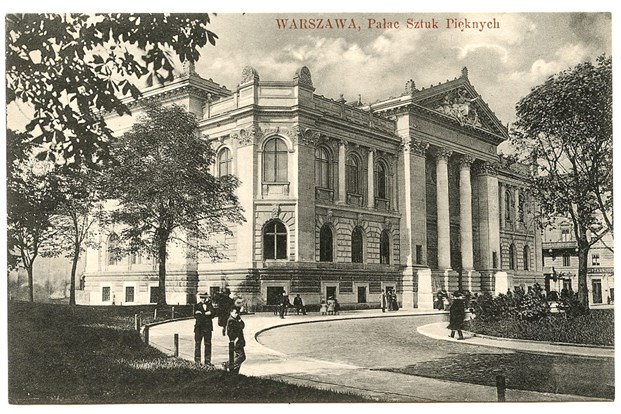
Zachęta National Gallery of Art: Warsaw`s contemporary art icon
Zachęta National Gallery of Art is the oldest art gallery in Warsaw. Several generations of artists, curators and art historians have worked for its status in the art world. The beautiful Italian Renaissance style building was erected thanks to the efforts of the Society for the Encouragement of the Fine Arts. It was established by a group of friends - artists and art enthusiasts who wanted to support Polish culture during the difficult time when Poland lacked independence and was partitioned.
The Society for the Encouragement of the Fine Arts was founded in 1860, but in the beginning, it didn't have its own headquarters. It operated in rented buildings, and one of the first locations was in the Gerlach Hotel, where soon after the Hotel Europejski was built. The main tasks of the Society were temporary exhibitions, art collecting and awarding scholarships to young artists. The building was constructed on Plac Małachowskiego and financed by contributions of members of the institution. It`s worth mentioning Ludwika Górecka, a social activist and philanthropist, who donated the property where her family home stood for the extension of the gallery. Her gesture was overlooked for many years because Górecka didn't want publicity. Today a plaque inside the gallery reminds us of her generosity.
The Zachęta building is one of the most important examples of representative architecture of the turn of the 19th and 20th centuries. It was designed by Stefan Szyller, an outstanding Warsaw architect. The monumental portico with stairs leading to the entrance is supported by pillars and Corinthian columns, and the top is filled with sculptures by Zygmunt Otto - the personification of the Genius of the Power of Art and allegories of Beauty and Truth. The Latin maxim ARTIBUS means - to the arts. After the gallery was opened, the Warsaw press called the Zachęta Gallery "the palace of art". During World War II, the building housed the Nazi propaganda cultural institution. Luckily it wasn't destroyed, which makes it one of the most precious historical monuments in Warsaw.
After the war, the building was the seat of the Central Bureau of Art Exhibitions following the cultural policy of the People's Republic of Poland, under which censorship was often used. It was only after the Fall of Communism in 1989 that Zachęta became one of the most important institutions for Polish culture, opening up to the world and placing Polish art in an international context. Zachęta has exhibited artworks of artists such as Alina Szapocznikow, Marlene Dumas, Roman Cieślewicz, Tadeusz Kantor, Wolfgang Tillmans, Wilhelm Sasnal, Katarzyna Kozyra and Leon Tarasewicz. In addition to temporary exhibitions, the gallery also creates its own collection, documents Polish artistic life, conducts educational activities, and organizes an exhibition for the Polish Pavilion at the International Art Exhibition – La Biennale di Venezia, one of the most important art festivals in the world.
During the difficult time of the pandemic, Zachęta did not slow down, and actually, the exhibitions of Monika Sosnowska (2020) and Joanna Rajkowska (2021) were one of the most interesting art events of the recent years. It was the first such large exhibition of Sosnowska in Poland. The Zachęta halls were filled with artworks created as a result of the deformation of structural elements of buildings and small urban architecture in communist-era Poland. The artist undermines the properties of the materials she uses, they are supposed to be durable but give the impression of being light and flexible. Rajkowska on the other hand, turned the interior of Zachęta into a scene resembling a post-apocalyptic movie, paying attention to the issues of climate change, related threats and possible scenarios of survival in the world after a cataclysm.
The Society for the Encouragement of the Fine Arts exists to this day and operates at the Zachęta National Gallery of Art. Recently it celebrated its 160th anniversary, on this occasion, together with Zachęta it initiated the "160/160" project awarding 160 scholarships to artists affected by the crisis during the pandemic. The society is an active and very open non-profit organization that responds to the challenges posed by today`s reality. It gathers both artists and art lovers, and everyone is welcome to join.
Photographs:
- Zachęta at the beginning of the 20th century, Zachęta`s archive
- “Simple rainbow” installation by Marek Sobczyk, 2019, photo: Anna Zgrodzka, Zachęta`s archive
- Leon Tarasewicz's work on the steps of Zachęta, 2006, photo: Sebastian Madejski, Zachęta's archive
- Monika Sosnowska's exhibition, 2020, photo: Piotr Bekas, Zachęta's archive
Author: Łukasz Godlewski, Hotel & Tour Guide, Raffles Europejski Warsaw
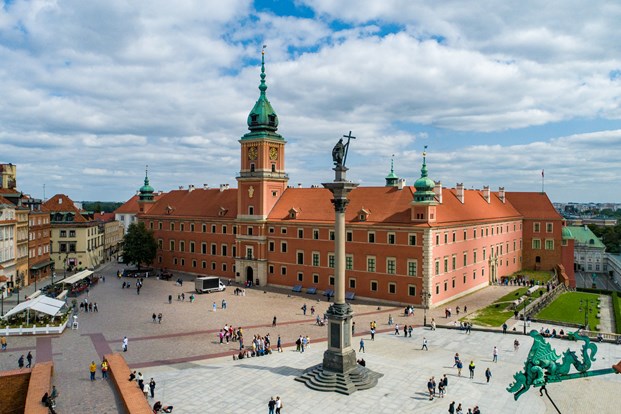
The 50th Anniversary of the Reconstruction of the Royal Castle in Warsaw
The reconstruction of the Royal Castle in Warsaw was an outstanding project on a globally unprecedented scale. It was the culmination of the post-war reconstruction of the Old Town which resulted in the inclusion of the area on the UNESCO World Heritage List in 1980. We are now celebrating the 50th anniversary of this remarkable achievement, and the program is certainly impressive.
The history of the Royal Castle dates back to the Middle Ages, but it began to serve as the main royal residence at the end of the 16th century when the royal court was moved from Krakow to Warsaw upon the initiative of King Sigismund III Vasa. The castle was also the seat of the parliament of the Polish-Lithuanian Commonwealth, after the union of Poland and Lithuania in the 16th century. In 1791, the May 3rd Constitution was passed in the Senators Hall of the castle. It was the first in Europe and the second in the world after the US Constitution.
At the end of the 18th century, the Royal Castle lost its governing functions as a result of the partitions of Poland carried out by the neighboring powers - Russia, Prussia and Austria. After Poland regained independence in 1918, the Royal Castle was first the seat of the Chief of State, and then the residence of the President of the Republic of Poland. Unfortunately, the Second World War brought its total destruction. The castle was blown to pieces by the Nazis during suppression of the Warsaw Uprising in 1944. Despite the unimaginable damage, it was decided to reconstruct the former royal residence as faithfully as possible.
The building in its raw state was rebuilt between 1971-1974, which is why the jubilee celebrations also extend to the years 2021-2024. The Castle walls have already hosted exhibitions of Baroque masterpieces by artists such as Caravaggio and Rubens.
During the gala inaugurating the second year of the anniversary, the Paolo Uccello exhibition Madonna with a Child from the series "Masterpieces at the Castle" was opened. In the coming months, we are expecting new exhibitions including the 300th birthday of the royal painter, Bernardo Bellotto, known as Canaletto. This Venetian painter created extraordinary paintings with views of 18th-century Warsaw which today are located in the Canaletto Room in the Castle. The exhibition about Jan Piotr Norblin will bring us closer to the figure of the French painter and draftsman who created drawings of many historical events important for Poland during his stay in Warsaw. At the exhibition about the Royal Library of Stanisław August, we will learn about the history of the place which, next to the Kubicki Arcades, is the only such impressive fragment of the former royal residence that survived the war. The anniversary celebrations will be accompanied by concerts and numerous educational and scientific events.
Raffles Europejski Warsaw is pleased to join the celebration of the 50th Anniversary of the Reconstruction of the Royal Castle in Warsaw. In the hotel lobby, we are presenting a showcase of elegant merchandise related to this unique event. Our guests have the opportunity to use the Royal Concierge service which allows them to visit all available exhibitions at the Royal Castle. As part of the invitation, audio guides on the Royal Route are also available in several languages: Polish, English, German, Russian and Spanish.
Author: Łukasz Godlewski, Hotel & Tour Guide, Raffles Europejski Warsaw




